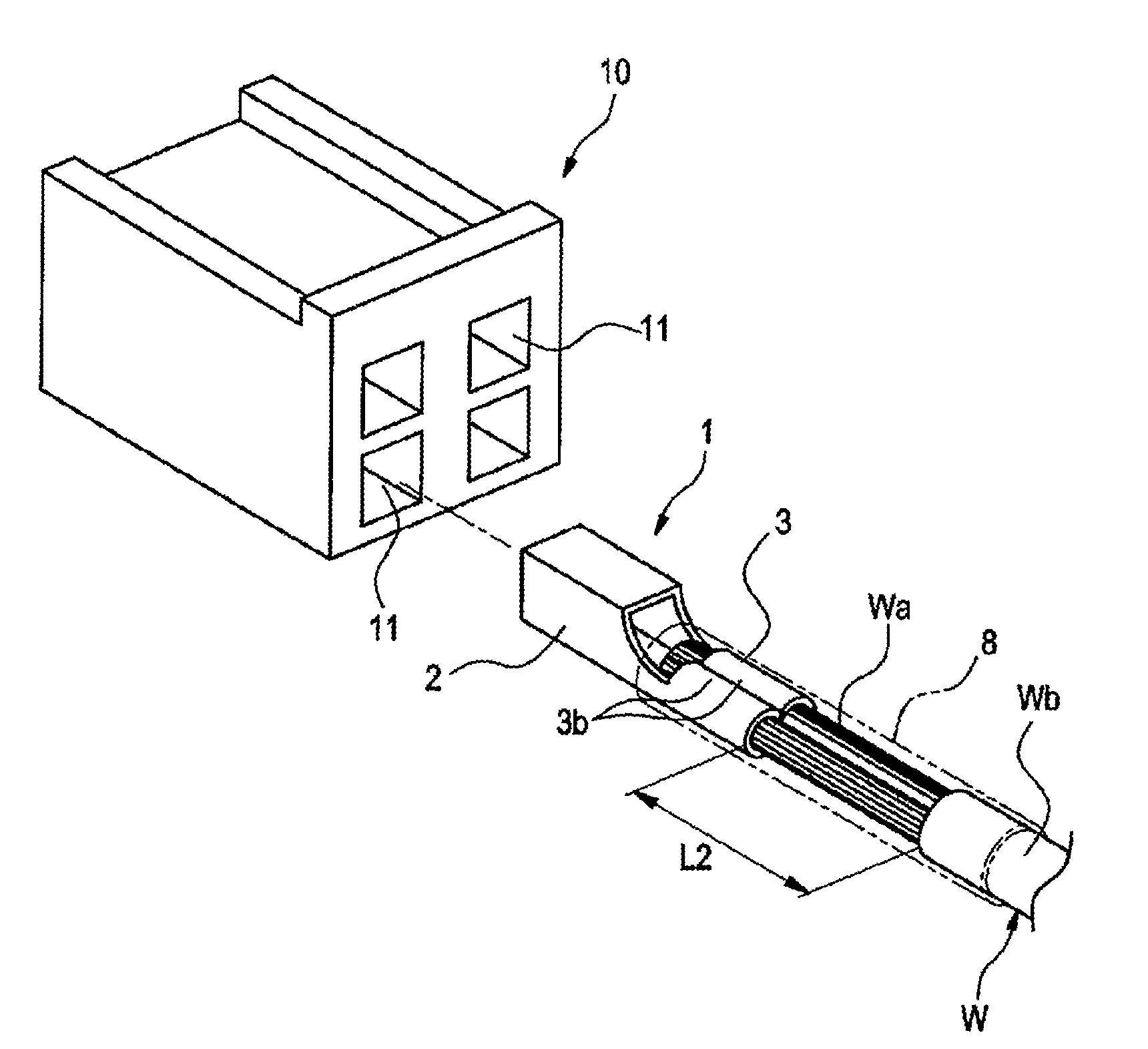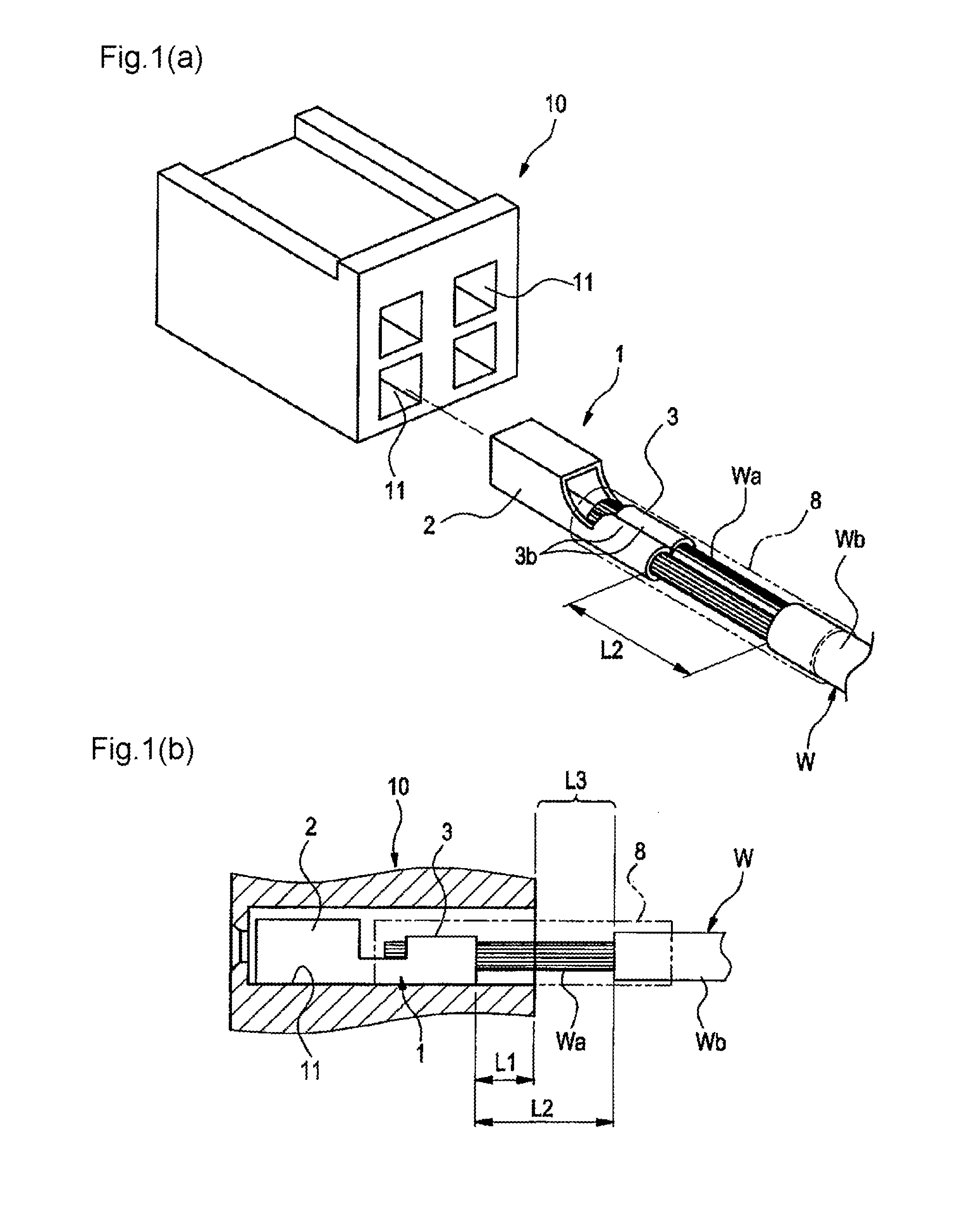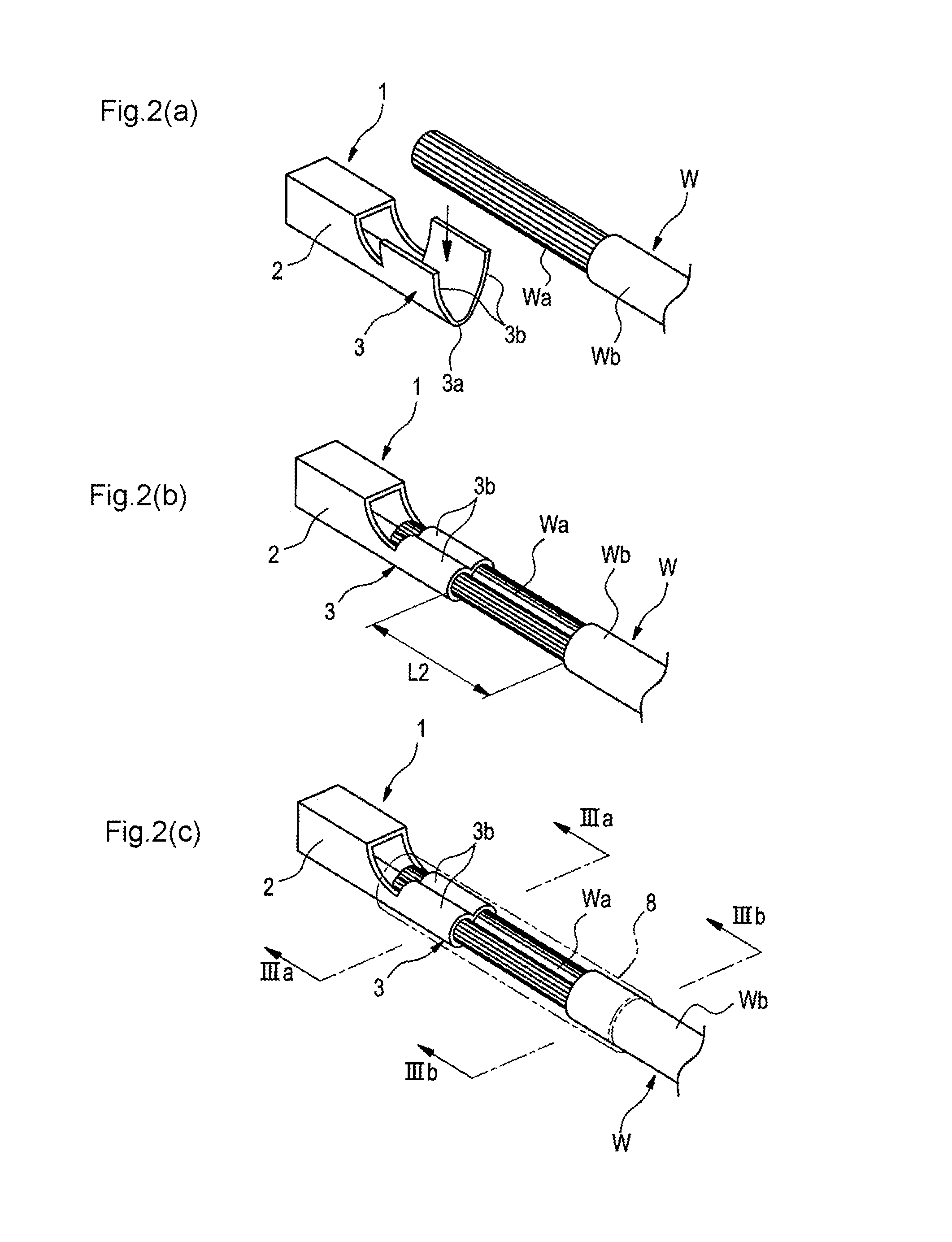Electric wire connection structure of connector terminal
a technology of connector terminals and electrical wires, which is applied in the direction of permanent deformation connections, line/current collector details, and connection between dissimilar metals, which might undergo electric corrosion of the junction between dissimilar metals, and poses difficulty or impedes the insertion of the terminal, etc., to achieve the effect of reducing the corners of the crimping pieces that bite into the electric wire, preventing corrosion, and enhancing the adhesion between the interior surface of the electric wire connection section
- Summary
- Abstract
- Description
- Claims
- Application Information
AI Technical Summary
Benefits of technology
Problems solved by technology
Method used
Image
Examples
first embodiment
[0053]FIG. 1(a) and FIG. 1(b) show an electric wire connection structure of a connector terminal of a first embodiment, wherein FIG. 1(a) is a perspective view showing that a connector terminal with an end of an electric wire is about to be inserted into a terminal accommodating chamber of a connector housing, and FIG. 1(b) is a side cross sectional view of the terminal accommodating chamber into which the connector terminal is inserted. FIG. 2(a) to FIG. 2(c) are explanatory flow diagrams through which the electric wire connection structure of the embodiment is produced, wherein FIG. 2(a) is a perspective view showing that a conductor of an electric wire from which an insulated sheath is cut off is about to be placed on an electric wire connection section of the connector terminal, FIG. 2(b) is a perspective view showing that the electric wire is crimped and connected with crimping pieces of the electric wire connection section after the conductor is placed on the electric wire con...
second embodiment
[0062]FIG. 6(a) to FIG. 6(d) are explanatory views of a second embodiment in which the present invention is applied to a connector terminal, like a common terminal, having a conductor crimping section and a cladding crimping section, wherein FIG. 6(a) is a perspective view showing that a conductor is crimped with the conductor crimping section and the cladding crimping section, FIG. 6(b) is a cross section acquired when viewed along a direction of arrows Vib-Vib shown in FIG. 6(a), FIG. 6(c) is a cross section acquired when viewed along a direction of arrows VIc-VIc shown in FIG. 6(a), and FIG. 6(d) is a perspective view showing that the portion of the connector terminal to which the electric wire is connected is further covered with a resin (designated by chain double-dashed lines).
[0063]The connector terminal 1 used in the first embodiment has only one conductor crimping section as an electric wire connection section. In contrast, an electric wire connection section 3B of a connec...
third embodiment
[0068]FIGS. 7(a) and 7(b) show an electric wire connection structure of a connector terminal of a third embodiment, wherein FIG. 7(a) is a perspective view showing that a connector terminal with an end of an electric wire is about to be inserted into the terminal accommodating chamber of the connector housing, and FIG. 7(b) is a side cross section of the terminal accommodating chamber into which the connector terminal is inserted. FIGS. 8(a) to 8(c) are explanatory flow diagrams through which the electric wire connection structure of the third embodiment is produced, wherein FIG. 8(a) is a perspective view showing that a conductor of an electric wire from which an insulated sheath is cut off is about to be placed on an electric wire connection section of the connector terminal, FIG. 8(b) is a perspective view showing that the electric wire is crimped and connected with crimping pieces of the electric wire connection section after the conductor is placed on the electric wire connecti...
PUM
 Login to View More
Login to View More Abstract
Description
Claims
Application Information
 Login to View More
Login to View More - R&D
- Intellectual Property
- Life Sciences
- Materials
- Tech Scout
- Unparalleled Data Quality
- Higher Quality Content
- 60% Fewer Hallucinations
Browse by: Latest US Patents, China's latest patents, Technical Efficacy Thesaurus, Application Domain, Technology Topic, Popular Technical Reports.
© 2025 PatSnap. All rights reserved.Legal|Privacy policy|Modern Slavery Act Transparency Statement|Sitemap|About US| Contact US: help@patsnap.com



